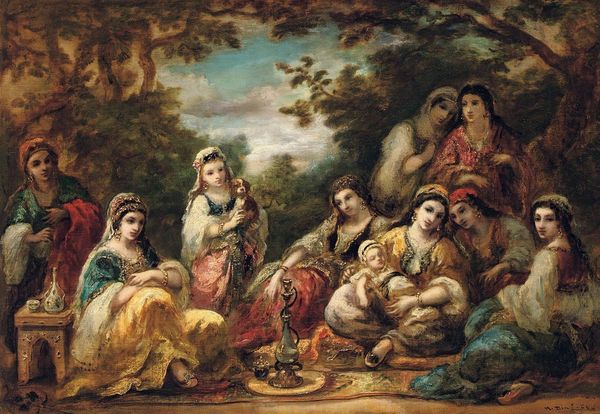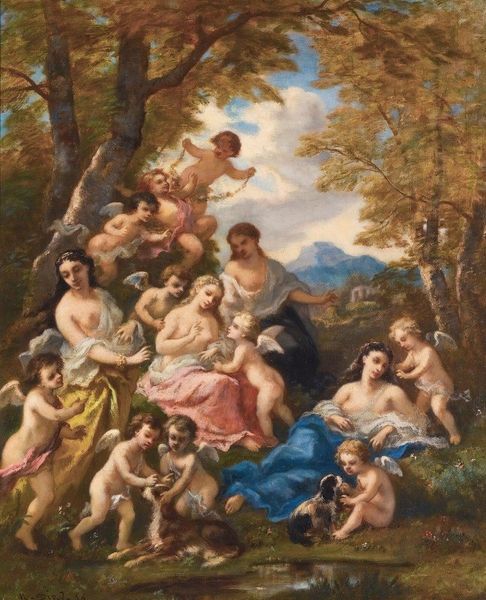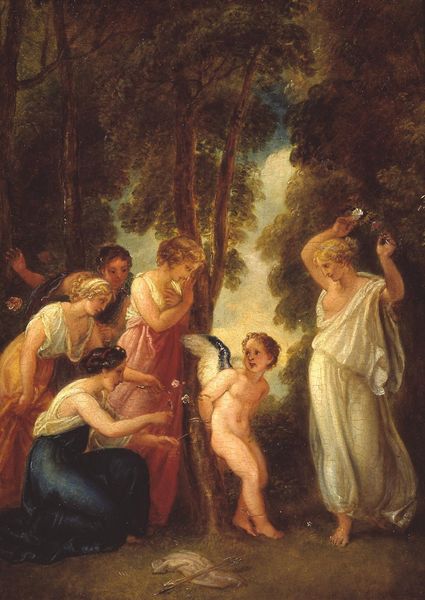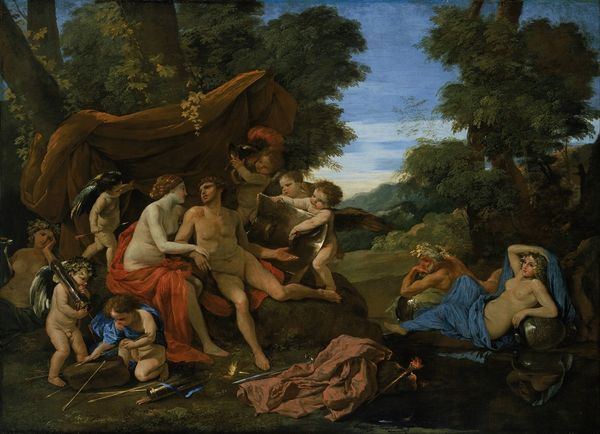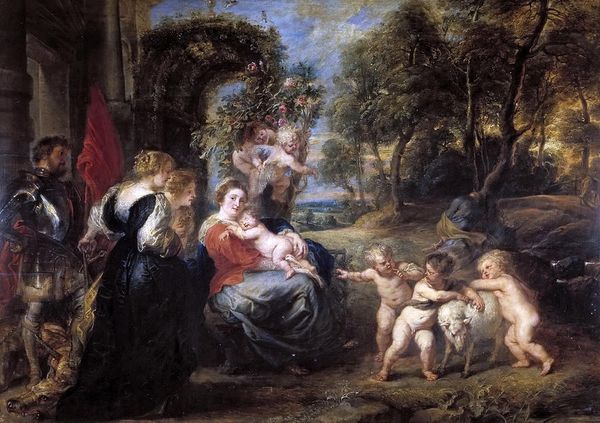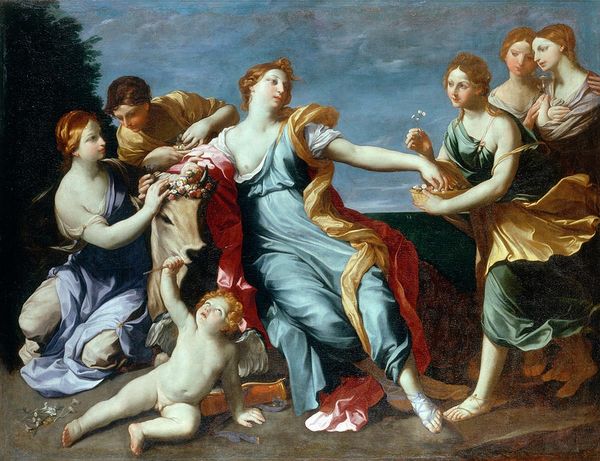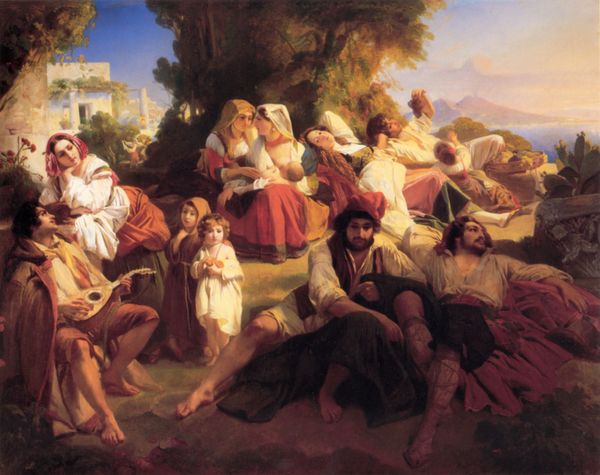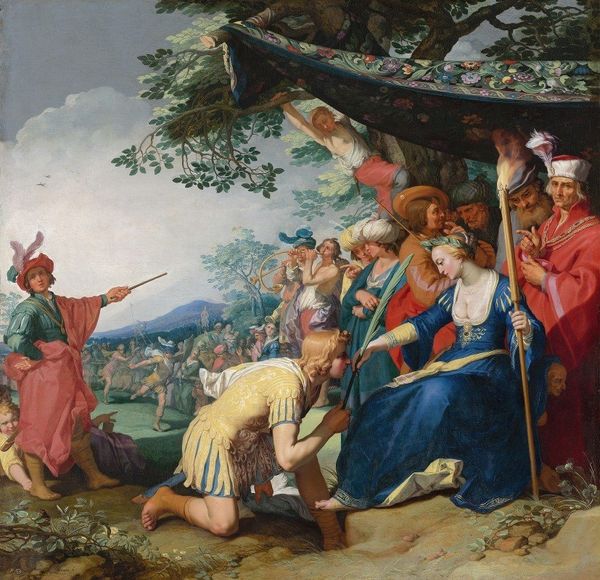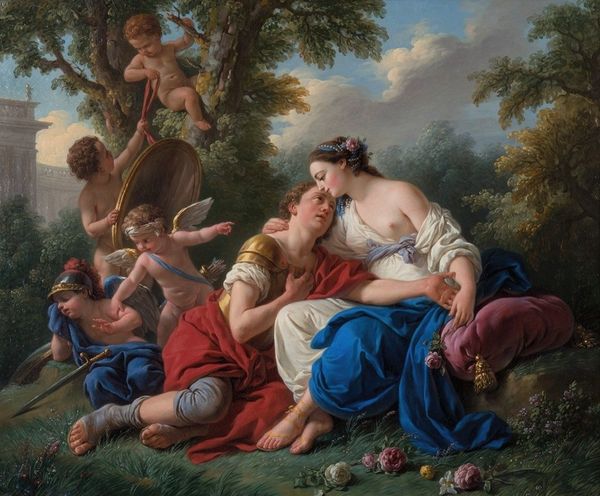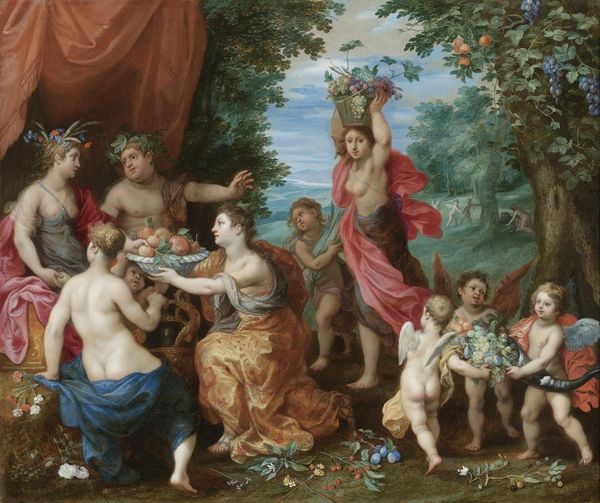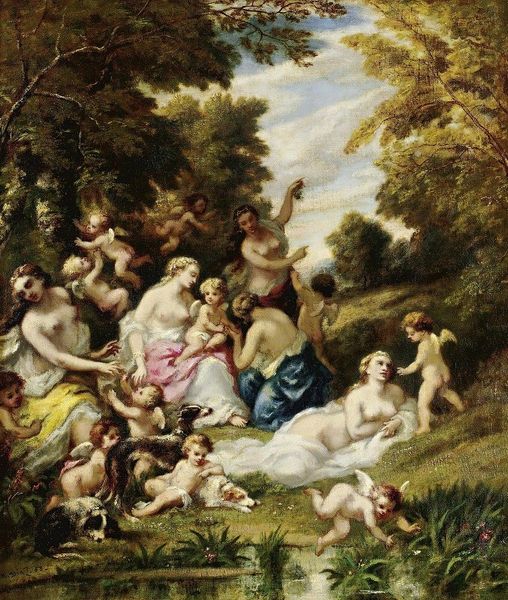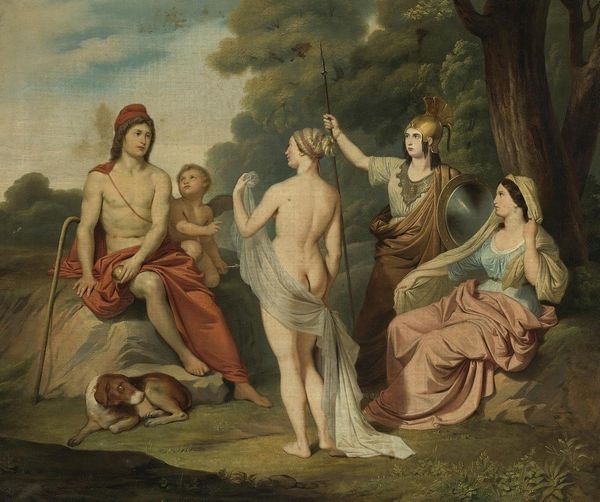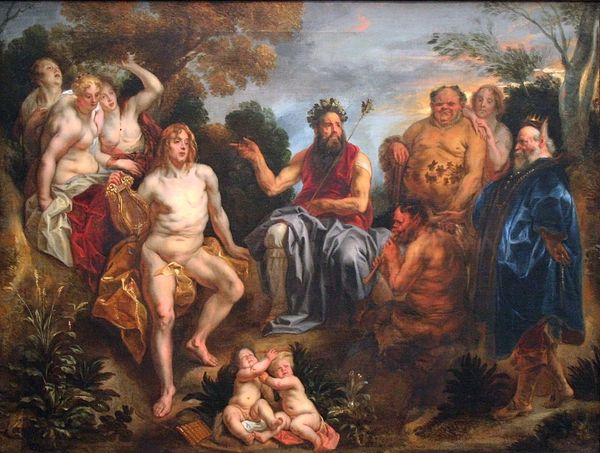
painting, oil-paint
#
painting
#
oil-paint
#
landscape
#
oil painting
#
group-portraits
#
romanticism
#
genre-painting
Dimensions: 254 x 190.5 cm
Copyright: Public domain
Curator: Let’s discuss Franz Xaver Winterhalter’s, "The Decameron" from 1837. It's currently held in a private collection, but I’m excited to delve into its context. Editor: Well, just visually, the Romanticism practically shouts at you, doesn't it? That shimmering light, the staged intimacy, the luscious folds of fabric. I immediately want to feel the textiles; there are some obvious clues in the choice of materials, which could tell us more. Curator: Indeed. The scene, inspired by Boccaccio's work, showcases a group finding solace from the plague through storytelling. Winterhalter paints an idealized vision, subtly reinforcing societal structures of his time. We have the fashionable attire set against the architecture with fountain, but the men are literally in the backdrop, reinforcing the role women played in society during the Age of Enlightenment and the social conventions in art and history. Editor: The surface rendering in oil paint is immaculate. But what's striking to me is the performative aspect – the posed gestures, the conscious display of wealth and leisure, evidenced in the application of color across this tableau. What labour went into the construction of this image? It must be noted, the materials chosen were deliberately luxurious and expensive, too. Curator: Absolutely. Winterhalter carefully navigated the expectations of his aristocratic clientele, producing pieces that reinforced their status and self-image. This is Romanticism shaped by social constraints. I also find his use of narrative fascinating—linking back to the historical precedent set by Boccaccio, and, in turn, legitimizing this opulent, escapist setting. The group is also reminiscent of the Three Graces theme from Renaissance art. Editor: While acknowledging that, the tangible reality remains: What paints were used, and were they costly? Was the canvas weaved by machine or hand, dyed by rare and natural pigments or modern inventions of the time? These are the details which would show us just how artificial Winterhalter's construction really is. Curator: A powerful point. Looking beyond the surface tells us much about the complex forces at play in artistic production during this period. Editor: Examining the materials gives us a foothold in understanding the broader implications in artistic representation. Curator: It underscores the dynamic interaction between aesthetics, society, and material culture and is a telling conclusion of our review of Winterhalter's masterpiece.
Comments
No comments
Be the first to comment and join the conversation on the ultimate creative platform.
